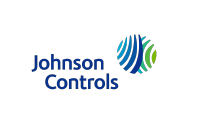With unprecedented levels of virtual team collaboration, more flexible work hours, and less time spent commuting, it’s no wonder that, as has been widely reported, global productivity increased dramatically during the pandemic…although these gains undoubtedly came at a high cost for some individuals and organizations. Now, as vaccination rates increase and pandemic restrictions are lifting in some places, leaders are facing the new reality of leading a hybrid workforce.
Transitioning to the New Normal of the Hybrid Workforce
According to a McKinsey survey, 9 in 10 organizations plan to combine remote and on-site work going forward. While there’s no one-size-fits-all model for a hybrid workforce or team, the term usually refers to a setting where some employees work remotely, some work on-site, and others work a combination of both.
Leaders must balance differing employee preferences with a desire for continued productivity and collaboration. Some team members may be clamouring to get back to the office, but many others want to continue to work from home. That’s why hybrid workforce policies and how effective managers can lead hybrid and virtual teams will be key for attracting and retaining talent in many organizations going forward.
5 Tips for Leading a Hybrid Workforce
1. Acknowledge what’s new and different about the hybrid workforce.
Leaders need to start by acknowledging that this environment is new and different and that what works for one person will not work for everyone. Leaders must reassure people that whether they’re working in person, remotely, or a combination of those, their choice is not career-limiting, and their contributions are valued. They must also set the stage for effective team collaboration.
Work to create a psychologically safe work environment where people can be open about their uncertainties and their frustrations. Ensure team members have the skills they need to hold candid conversations with one another, no matter where they are.
2. Foster empathy, equity, and inclusion in your hybrid workforce.
Work to maintain or establish inclusive practices for things like team huddles or group calls. Remember the lessons learned during the pandemic to ensure meetings remain inclusive (e.g. everyone signs in on a separate device). Without intentionality and clearly defined processes, it could be easy for those returning to work in person to fall back into old habits, unintentionally excluding or overlooking colleagues who are working offsite. Also, take time to help your new hybrid workforce to develop an identity by crafting a set of shared team norms and expectations. Everyone should understand the team’s purpose and goals, work processes, meeting frequency, and how decisions will be made. Consider the following questions:
- If individuals plan to work part-time remote and part-time in person, which days will they come to the office?
- How can team meetings accommodate the needs and leverage the contributions of both in-person and remote participants effectively?
- How will communication tools and technology platforms be used to support the team’s goals and outputs?
Leaders of highly effective teams enable full participation of all their members, no matter where they are.
3. Cultivate the mindsets of learning agility and resilience.
Those organizations willing to take a “test-and-learn” approach to designing — and redesigning — their processes for a more remote workforce realize higher levels of productivity. Learning agility, or the ability to adapt and thrive in new situations, is crucial to your organization’s hybrid workforce success. Leaders should schedule time every couple of weeks to talk with their team members about what’s working and what isn’t. In addition, they should connect with other leaders of hybrid teams throughout your organization. What are their successes and challenges?
In this uncharted territory, resilience is more important than ever and burnout continues to be a problem. So leaders should set an example for the hybrid workforce by prioritizing their own mental and physical health. Whenever possible:
- Nurture your personal and professional relationships;
- Prioritize regular exercise and sleep each night;
- Make time for mindfulness; and
- Respect downtime and avoid contacting employees during their off-hours.
4. Pay close attention to shared purpose, alignment and accountability.
When you look around, do you see a shared purpose? In other words, are our team members in agreement on the group’s overall goals?
Ask yourself whether your group is aligned — whether members with different tasks and roles are coordinating their work.
Finally, is there “team accountability” or mutual responsibility for the group? When teams have strong commitment, they feel responsible for the success and well-being of the group.
5. Focus on working across boundaries both within and outside of the organization.
In establishing what a hybrid workforce will look like for your organization, think consciously about your individual team’s network within the organization. Ask yourself:
- How is my team connected with other teams?
- How do my team members and I best interact with those teams?
- How is my team currently spanning boundaries?
- How can we foster interaction, better conversations, and effective collaboration between departments in a hybrid workforce environment?
When members of your hybrid workforce see leaders recalibrate, adapt, and embrace the future with an agile and collaborative mindset, they’ll likely do the same. (Adapted from McKinsey)

















